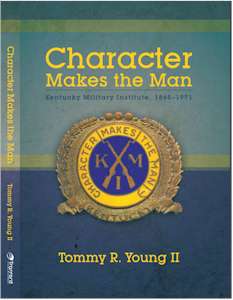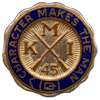|

This collection of historical fiction short stories is about some of
the most colorful characters who defined the American West. Some are
familiar; some may be new to the reader. Television and movies have
depicted most of these early Western Americans inaccurately. Newspaper
and dime novel writers of the 1800s highly exaggerated many tales about
these pioneers, gunslingers, lawmen, and outlaws. They glamorized their
exploits as far more exciting than they actually were to sell their
journalistic endeavors. These stories are told from the point of view
of Jeremiah Thomas V, his great-great-grandfather was a newspaper
reporter and author of Western Stories in the 1800s. He wrote about
many Western heroes we have come to know and love. Calamity Jane, Wild
Bill Hickok, Buffalo Bill Cody, Pony Boy Haslam, Sam Bass, Belle Star,
Jesse James, Frank James, Cole Younger, Kit Carson, Jim Bridger, Bat
Masterson, Katie Elder, Mary Fields, Pearl Hart, John Wesley Harding,
Tom Horn, Frank Canton are discussed. Passing these stories down
through generations was the norm of this time. Jeremiah V heard these
stories while caring for his dying grandfather and uncovered volumes of
pages and diary entries that his great-great-grandfather had written
over a 60-year career. Some of the stories came directly from the
mouths of these Western legends. While trying to be historically
truthful and accurate, the author has inserted some narratives from his
imagination. I hope you find these tales entertaining and descriptive
of the times known as the American Wild West.
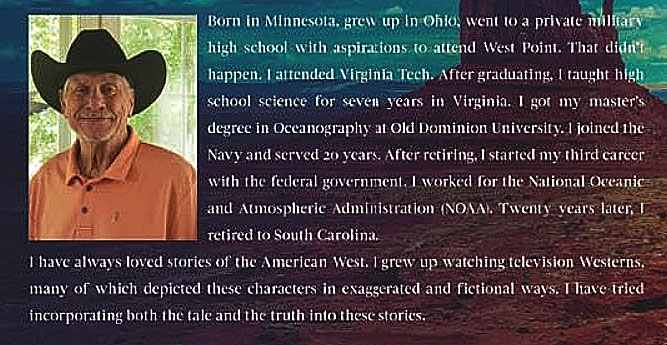
|
|
David H. Jones, KMI Class of 1958
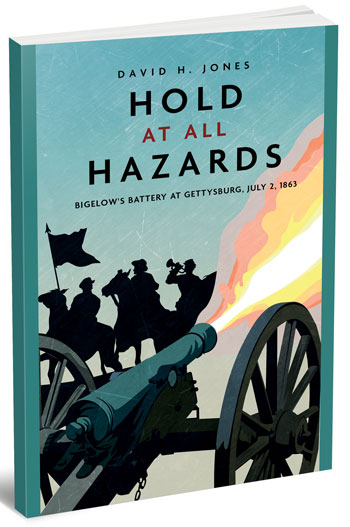 By
late January of 1863, the 9th Massachusetts Battery of Light Artillery
has been stationed within the Washington, D.C. defenses the entirety of
its five-month existence. The soldiers are badly demoralized,
inadequately trained and poorly disciplined. When the inept captain of
the battery believes that he’s about to be fired, he hastily resigns,
and the governor of Massachusetts promptly selects a
twenty-three-year-old artillery officer with battlefield experience to
take command. By
late January of 1863, the 9th Massachusetts Battery of Light Artillery
has been stationed within the Washington, D.C. defenses the entirety of
its five-month existence. The soldiers are badly demoralized,
inadequately trained and poorly disciplined. When the inept captain of
the battery believes that he’s about to be fired, he hastily resigns,
and the governor of Massachusetts promptly selects a
twenty-three-year-old artillery officer with battlefield experience to
take command.
Captain John Bigelow institutes strict discipline and rigorous training
which causes the men, including Chief Bugler Charles Wellington Reed,
to consider him to be a heartless tyrant. However, Captain Bigelow’s
methods rapidly improve their capabilities and Reed reluctantly gains
respect for the new captain. Nevertheless, subtle conflict between
captain and bugler remains in a manner only constrained by military
protocol. KMI alumni will recognize a certain phrase spoken by Captain
Bigelow to his gunners and cannoneers at one point in the book.
In late June of 1863 the battery is collected by the Army of the
Potomac as it passes the Washington defenses to thwart an invasion by
Robert E. Lee’s Army of Northern Virginia. After days of hard marching,
Bigelow’s Battery arrives on the Gettysburg battlefield in the forenoon
of July 2, 1863. Within hours they are immersed in violent combat
during which the officers and men of the battery fight like veterans
against the Confederates. Unbeknownst to Charlie, he will twice disobey
a direct order from Captain Bigelow before the day is out. When furious
fighting reaches a crescendo, the inexperienced light artillery battery
is ordered to hold its position at all hazards, meaning until it’s
overrun. Without hesitation the batterymen stand to their guns and
sacrifice their life’s blood to gain the time necessary for a second
line of artillery to be formed behind them, thus helping to prevent a
disastrous defeat for the Federal Army on Northern soil. Charlie saves
his captain’s life and is awarded the Medal of Honor in post-war years.
The characters portrayed in this historical novel were actual persons
who participated in critical moments of fighting at Gettysburg on July
2, 1863. The substance of the story is derived from books, letters and
accounts penned by these participants and contemporary observers. Words
of dialogue and narration are often borrowed from their written
recollections and imagined scenes are founded on circumstances
described in such sources.
AMAZON:
Hamilton Books:
|
WARD IRVIN, KMI Class of 1968
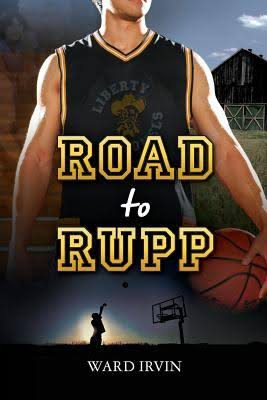 Road to Rupp is the fictional recollection of a small-town, Kentucky high school basketball phenom as he and his team Road to Rupp is the fictional recollection of a small-town, Kentucky high school basketball phenom as he and his team overcomes obstacles, both on and off the court, while chasing the state
title. JoWayne Boone and the Liberty High Colonels are headed to the
state championship. .
overcomes obstacles, both on and off the court, while chasing the state
title. JoWayne Boone and the Liberty High Colonels are headed to the
state championship. .
Long before Ward Irvin had
thoughts of writing Road to Rupp, he was born into a modest family in
Louisville, KY. The second of five boys, Irvin received his elementary
and middle school education in public school and spent his high school
years at an all-boy military school (KMI).
He later attended The University of Kentucky where he met his wife,
Belinda. Upon graduation, Ward and Belinda married and later parented
three sons. The family moved to Charleston, SC, in the Fall of 1978
where they currently reside. When Ward is not writing, his hobbies
include playing guitar, cycling and swimming. He has published several
sports-related articles and has composed over 200 songs. It is Ward’s
love of teamwork and competitive sports that was the inspiration for
this story. Road to Rupp is his first novel. To learn more about Ward
and to follow the development of future titles in the JoWayne Boone
series, please visit WardIrvin.com or WardsFastBreak.com
Amazon: 361 Pages
Road to Rupp Kindle Edition
by Ward Irvin (Author) Format: Kindle Edition
|
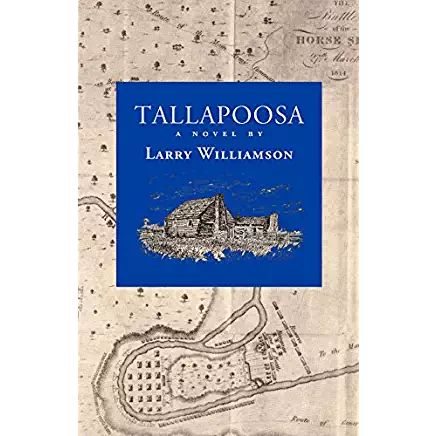
1st Edition
Two
brothers from Virginia migrate to new lands in the Mississippi
territory (present-day Alabama) in the early 1800s. There they take
brides, one an Indian woman and the other the daughter of another
settler, and try to build lives on the border of the Creek Nation. At
first, life is peaceful and happy as the two couples farm, build and
trade with the Creeks living nearby. But as more Europeans arrive,
economic forces, political ambition, and personal aggression result in
increasing conflict and then bloodshed, culminating in the Battle of
Horseshoe Bend in 1814. Tallapoosa is an exciting historical novel
about the Creek Wars and the ramifications of U.S. aggression into
Native American lands.
Amazon.com Books
|
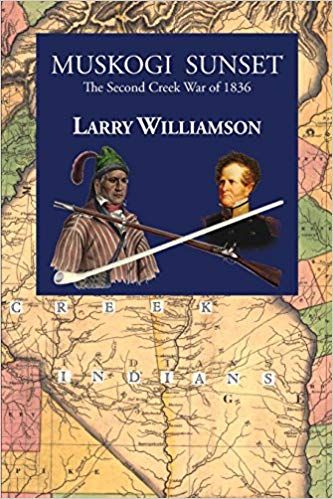
Muskogi Sunet
1st Edition
Larry Williamson’s story
of the first Creek War in Alabama (1813-1814), Tallapoosa (2001 by
NewSouth Books), was a rousing success, and this sequel, Muskogi
Sunset: The Second Creek War of 1836, builds on that tragic story,
including many of the same characters and mix of historical facts and
exciting story line.
Williamson’s update on the
Murph family and its strong personal connection with the local Creeks
living on the Tallapoosa River shows that Jackson’s Indian Removal Act
of 1830 was not fully endorsed by Alabama's citizenry, especially those
living on Creek lands.
Though the Cherokees Trail
of Tears is more famous, the Creeks had their own forced removal. The
Creeks knew they had little say in the matter and that many whites
would take advantage of the situation to steal their homes and
property, sending them on a heart-breaking path toward what would later
be known as Oklahoma.
It is troubling in today’s
diverse society to realize the lengths our ancestors took to eliminate
the native population from their homes, but it is also understandable
why so many of the Creeks in 1836 were willing to stand against the
government oppression unwillingly fostered upon them.
Larry's first book was the
historical novel Tallapoosa, about the Creek Indian War of 1813-14.
Muskogi Sunset, concerning the Second Creek War of 1836, is the sequel
to Tallapoosa.
|
|
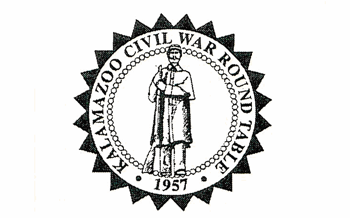
May 25, 2014
The
Kalamazoo Civil War Round Table is pleased to announce Stephen M “Sam”
Hood (KMI '70) as
the winner of the 2014 Albert Castel Book Award. This award is made on
a
biennial basis to the author of an exceptional book on the Civil War in
the
Western Theater. The adjudicating committee is made up of members of
the
Kalamazoo Civil War Round Table. The award is named in honor of Dr.
Albert
Castel, Professor Emeritus of History at Western Michigan University
here in
Kalamazoo. Dr. Castel is considered one of the pre-eminent scholars and
most
prolific writers on the “Civil War in the West”. 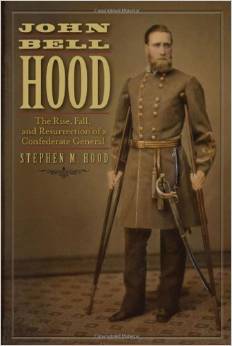
Mr.
Hood will receive the 2014 award on September 19th, for his book, John Bell Hood: The Rise, Fall, and
Resurrection of a Confederate General, published by Savas Beatie
LLC, El
Dorado Hills, CA. The meeting will
begin at 7:30 pm, at Westwood United Methodist Church, 538 Nichols
Road,
Kalamazoo, MI and will be open to the general public.
Refreshments will be offered, beginning at
7:00 pm.
Stephen
"Sam" Hood talks about his book, John Bell Hood: The Rise, Fall, and
Resurrection of a Confederate General, in which he looks at the
military career, personal life, and legacy of Confederate General John
Bell Hood. In his book, the author, a distant relative of the general,
analyzes General Hood’s actions at Gettysburg, Chickamauga, and
Antietam by delving into letters and medical records released by Hood’s
descendents. He argued that many of the Hood’s controversial acts are
clarified or redeemed through an examination of the documents
|
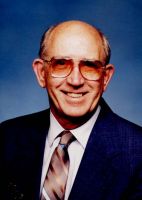 Lt.
Commander, Navy Chaplin, USNR, Paschal (Bernard) Baute, KMI '47,
who
served with all four branches of the U.. Lt.
Commander, Navy Chaplin, USNR, Paschal (Bernard) Baute, KMI '47,
who
served with all four branches of the U..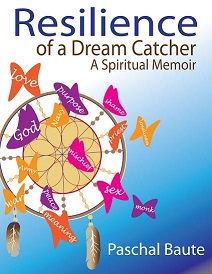 S. Military-- over a 24
year period, tells his stories of coping
with loss, no matter what. He uses every chapter of his life dealing
with setbacks and adversity to design a resource, a guide, a program
for teaching resilience. Each chapter of his life, some 28 and 12
appendices has lessons in learning resilience, inch by inch—the hard
way, by experience. S. Military-- over a 24
year period, tells his stories of coping
with loss, no matter what. He uses every chapter of his life dealing
with setbacks and adversity to design a resource, a guide, a program
for teaching resilience. Each chapter of his life, some 28 and 12
appendices has lessons in learning resilience, inch by inch—the hard
way, by experience.
Furthermore, Dr. Baute, also
a pastoral psychologist, has arranged with his publisher to make this
book permanently free to
all VA agencies, all Veterans and all military. By use of special code
in purchasing the book formatted for a range of hand held devices, no
Veteran or VA person will ever pay a penny to read this book. This is
my gift to my brothers and sisters, for those who have given so much..
Every branch of the U. S.
active military now has a program in resilience training ((See Appendix
Nine for descriptions). Here is your program for learning and coaching
the urgency of “attitude” for our disabled Veterans, for mentoring
coping well, no matter what, for taking charge of their own wellness
program. I have created this memoir with 26 million of my
disabled Veteran brothers and sisters in mind. Many early reviewers
view this book as a valuable aid in helping our Veterans cope with
their many adversities. If you like this book, please mention it to
others,” pass it on.”,
"two chapters
on KMI"
In love of my country and
our Veteran brother/sisterhood,
ORDERING INFORMATION (RELEASE
January 28, 2014) All ebook versions $9.95
Contact Paschal for pre-order information and group discounts
|
REFLECTIONS:
A
Portrait - Biography of the
Kentucky
Military Institute
(1845
- 1971)
by James Darwin Stephens
Copyright ©
1991
|
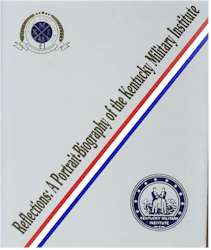
|
TABLE OF
CONTENTS:
[To
view example content from the book, click here]
top quality second edition printing
- OUT-OF-PRINT
|
|
June 15, 2004
Summer Greetings, Alums!!
Many of you remember James Darwin Stephens from the class
of 1933.
Jim retired as a Colonel in the U.S. Army and resided in Georgetown,
Ky.
with his wife Glenda. He was most active in alumni issues until
his
death in the mid 1990s. Jim spent 20 years of his own time and
$30,000.00
of his own money pursuing an accurate written and pictorial account of
the history of the Kentucky Military Institute. The final work
was
a masterpiece. Two hundred fifty copies originally were printed
by
the Berea Press at a cost to Jim of $100.00 per book. Many of you
bought the first edition for yourselves while others donated the books
to libraries, historical societies, and city halls around Kentucky. All
proceeds were returned to Jim's widow, Glenda.
The influence of KMI can be seen all over the
country. Here
in Pensacola, Fl., for example, we have a park called Ferdinand
Plaza.
A memorial to Pensacola shipping magnate William Dudley Chipley shares
its space with a bust of Andrew Jackson. Chipley was responsible
for building Pensacola's shipping business after the Civil
War. He is an 1857
graduate
of KMI. Jim provides a fine biological sketch on Chipley in his
book.
I often had contemplated going back to the Berea Press to see if a
second
printing would be possible. Dick Stephsenson, from the class of
1958,
checked into it and returned with disturbing news. The Berea
Press
is out of business, and no one knows the whereabouts of Jim's original
materials.....including the plates.
What to do, what to do, what to
do?????
Enter Bill Victor, class of 1969. Bill owns a
publishing company
in Akron, Oh. I sent a water damaged copy of a first edition up
to
him for his expert opinion. Today's state-of-the-art reproduction
technology can give us a top quality second printing. Bill said
the
actual cost of production could be under $150.00 per book if we can
confirm
enough orders. Keep in mind that
Jim Stephens entertained bids, resulting in a $100.00 per book
production
cost, fifteen years ago.
Thanks, Leon
Leon Hirsh, KMI '68
800-332-1411
Lhirsh5049@aol.com
|
|
Jay
bought into his first business at age 32, acquired the rest of it over
three years, for a total of $75,000, ran it for 14 years, and sold it
to two of his managers for $500,000. After taking a couple of years off
from "real" business to guide horse trips in Colorado, he started
another business "on his kitchen table." This venture was initially
capitalized at $3,000. He and his partners sold it 19 years later, for
$60 million. That’s American Dollars, a big pile of them. In the
process of starting and running these businesses, he did some things
right and many things wrong. In this book he gives you the benefit of
his years of acquired knowledge. Hopefully, you can learn from his
adventures, adopt some of the good things and avoid having to learn
everything the hard way.
THE TOURIST WAR
A Semi-Autobiographical Novel
by
Jay Hearst, KMI '49
[NEVER PUBLISHED-Click on link above!]
I
have started a semi-autobiographical novel, dealing with my experiences
at KMI (1945-49) through ROTC at Harvard and my two years with the Air
Force in Germany.
The
draft forward and part of the first chapter is attached. I would like
to have any KMI alumni who have stories and/or pictures they might like
included to contact me. If I use them, they will be credited and get to
vote on which three charities will receive 50% of the net proceeds.
Also, if interested, they can order the book upon publication at half
off the retail price.
Since
you probably maintain the largest contact list of former KMIers, I
would appreciate your forwarding this message or advising me how best
to get the word out.
|


